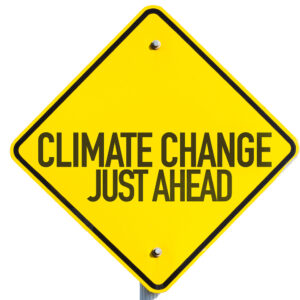With most Americans distracted on Black Friday, the U.S. government published its latest National Climate Assessment (NCA) — a federal report endorsed by 13 agencies and the most comprehensive study of climate change’s effect on the U.S. to date.
While the administration may have intended to bury these bombshell findings, that’s hardly been the case. What the report confirms is what we know already from personal experience: the entire country is experiencing our changing climate and its effects on our economy, communities and health. And the Midwest is projected to experience these changes more acutely than other areas.
Here are five of the more acute ways the Midwest is enduring climate change and what we can do about it:
First, the temperature is rising more quickly than anywhere else in the United States. Over the first half of this century, summer temperatures are projected to rise by an average of more than four degrees — higher than any other region of the country. By 2100, cities like Chicago may begin to look more like Las Vegas, with forecasts of temperatures of more than 100 degrees nearly 60 days per year. And the Midwest’s housing infrastructure is not suited for tropical temperatures.
Second, higher temperatures are causing unpredictable crop yields. A record-breaking drought and heat wave in 2012 dragged down Indiana corn production by nearly 30 percent compared to 2011. While some fluctuation is normal, NCA forecasts the Midwest’s $58 billion crop production industry will experience sustained decline by as much as 25 percent for some of our most important crops, including corn and soybeans.
Third, heavy rains and extreme weather are costing us billions every year. In 2011, more than three-quarters of weather disasters that exceeded $1 billion in damages occurred in the Midwest. The NCA predicts damage due to flooding could become far worse with the anticipated increase in frequency and severity of rainfall.
Fourth, climate change threatens our infrastructure and economy. The EPA expects infrastructure in the Midwest to be hit the hardest by a changing climate. Our forests will suffer as rising temperatures and invasive species could reduce the total value of lumber in several Midwestern states by up to $788 billion by 2100. That’s nearly 14 times the total annual revenue of crop production in the entire Midwest. And, with estimated productivity losses and premature deaths from heat stroke and other heat-related illnesses costing $10 billion by 2050, our workforce is in jeopardy.
Fifth, our health is at risk. Climate change has helped fuel a dramatic increase in Lyme disease over the past 15 years. And we know that rising temperatures lead to longer allergy seasons. But the long-term effects from unfettered climate change are much worse than tick or airborne illnesses. Higher temperatures mean higher concentrations of ozone particles in the air we breathe, which increases the health effects of many lung and cardiovascular diseases. As a result, NCA projects that our deteriorating air quality may cause up to 550 premature deaths in the region each year by 2050. And this doesn’t account for the hundreds of deaths attributed directly to extreme weather events annually.
Are we ready for this? The frightening forecasts can, understandably, leave us feeling hopeless or, worse, apathetic. But amid the dire predictions, experts are also telling us that we can still mitigate future dangers.
For example, the Great Lakes Climate Adaptation Network — a network of local government staff who work to identify and respond to the unique climate adaptation challenges of the Great Lakes region — is just one example of how regional collaboration can help programs designed to preserve these essential fresh water sources by reducing costs and increasing information-sharing.
Wind and solar energy capacity is expanding, getting cheaper and creating local job opportunities in the Midwest. Electric cars, trucks and buses are the future of transportation in our cities and towns. Planting trees that absorb harmful gases also cools our cities and helps reduce air pollution. Energy efficiency reduces pollution and saves money. These are all mitigation actions that federal and state policies should support.
At Indiana University, I’m part of a team of researchers furthering this mission by equipping state, local and community leaders across the Midwest region with the tools and information needed to assess and respond to these environmental challenges.
It is not too late. We already know what we can do. We just have to be willing to invest in and implement scalable and sustainable change in our communities and in our daily lives.
Change can be hard but the consequences of unchecked climate change will be harder.

